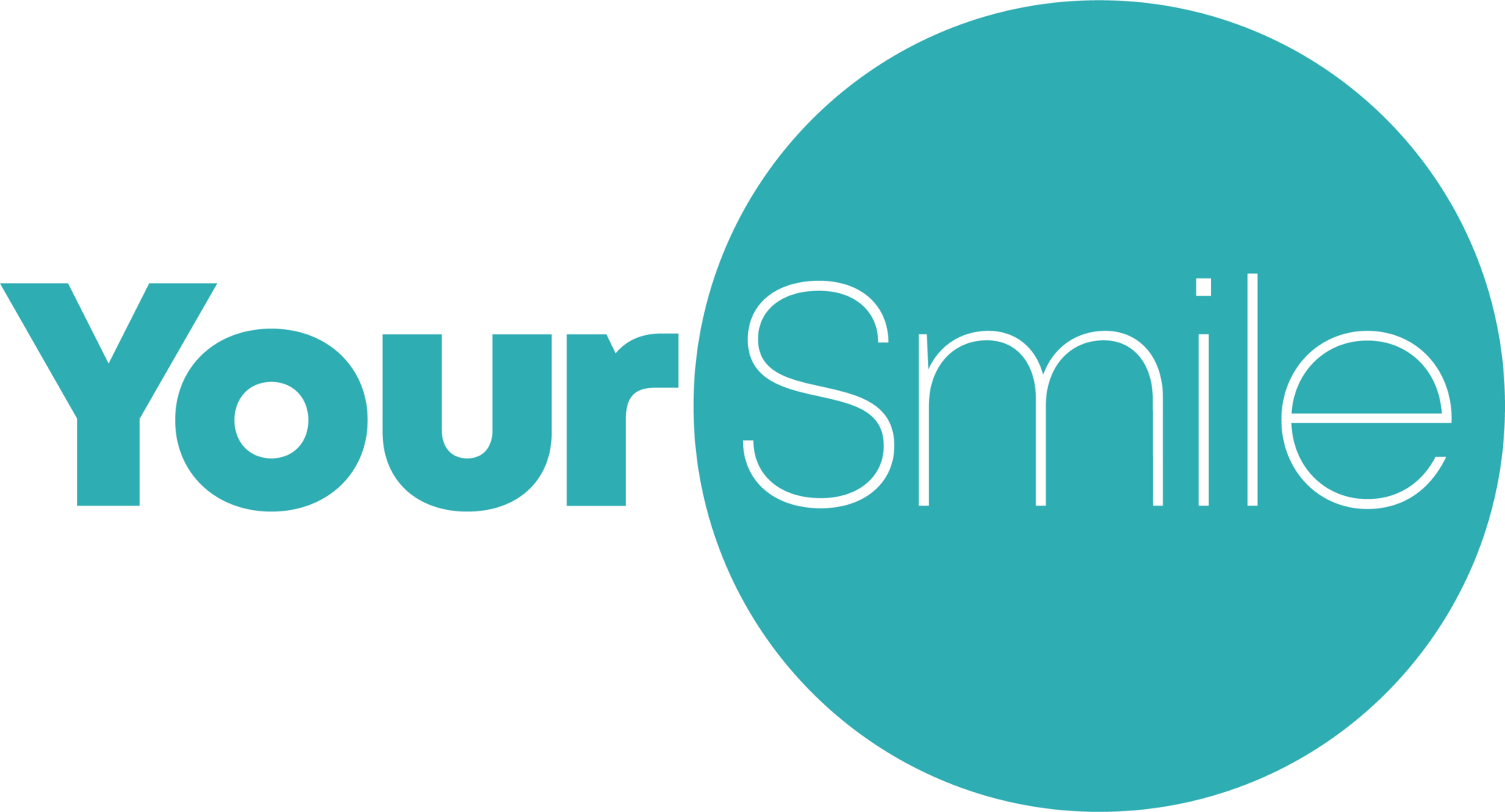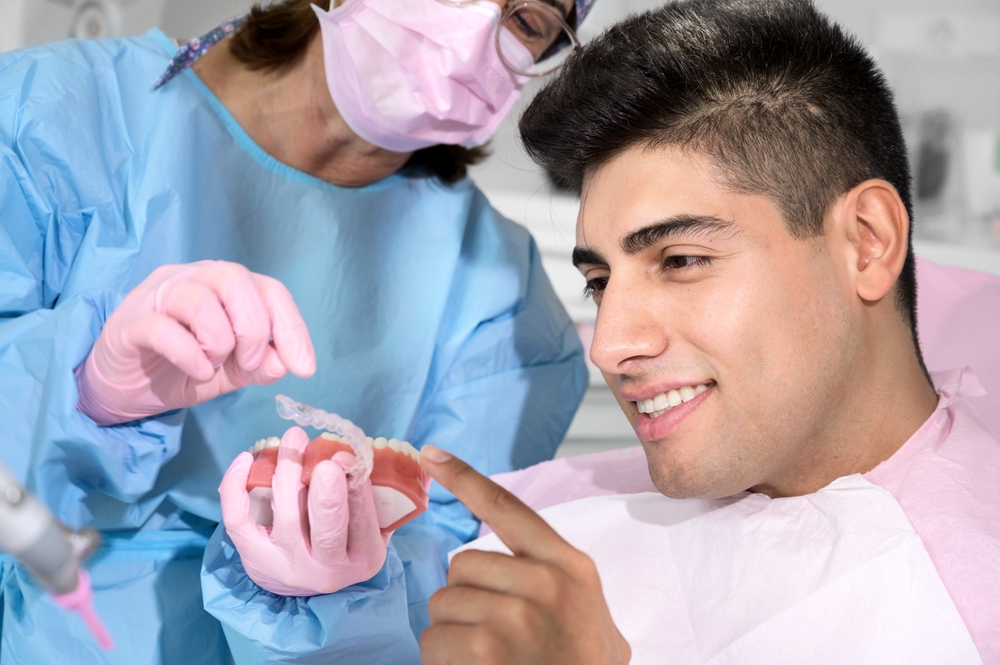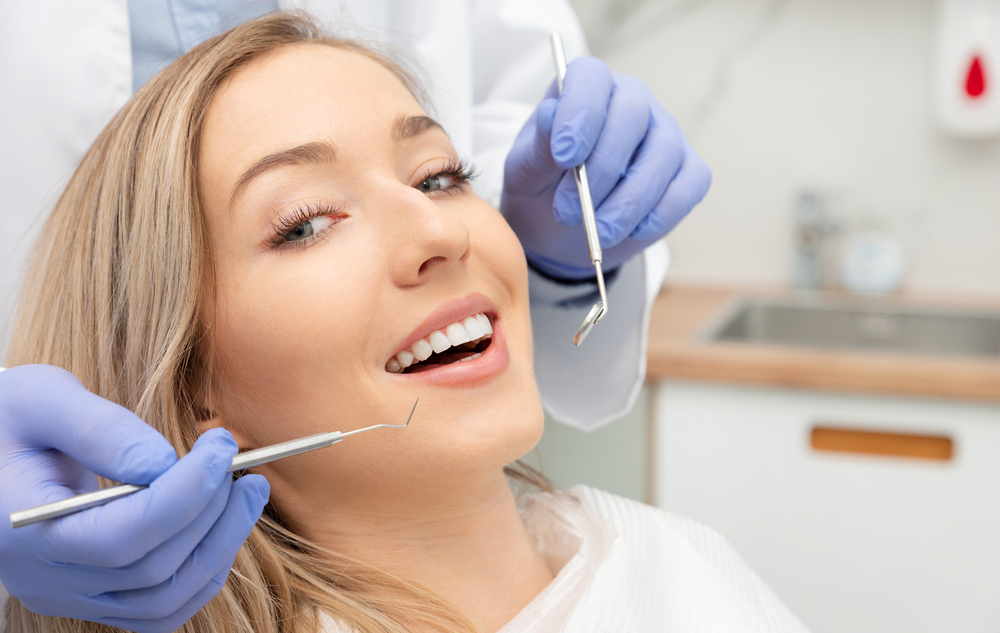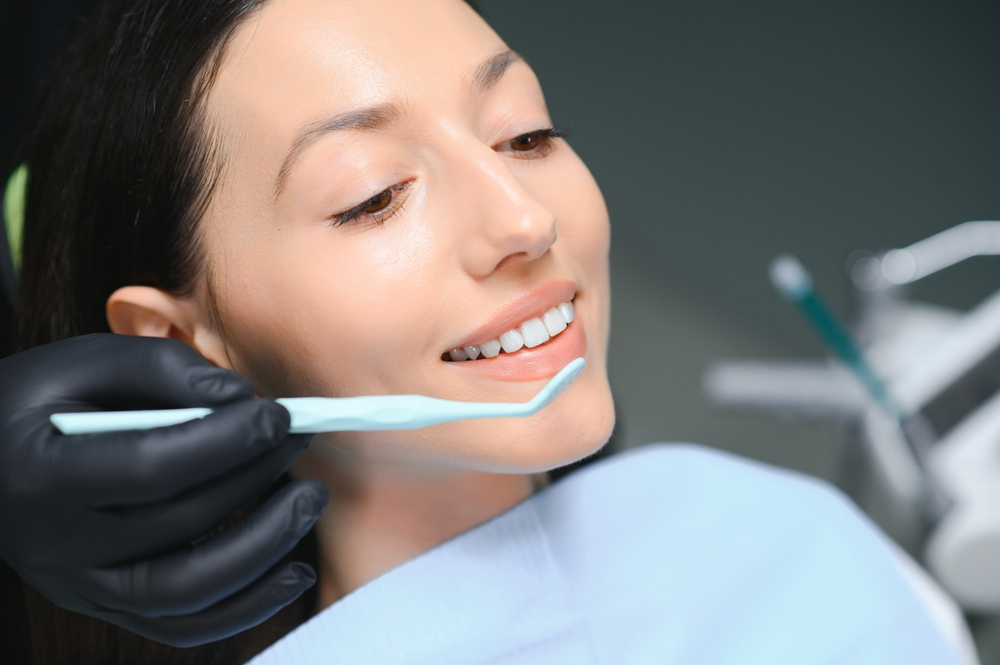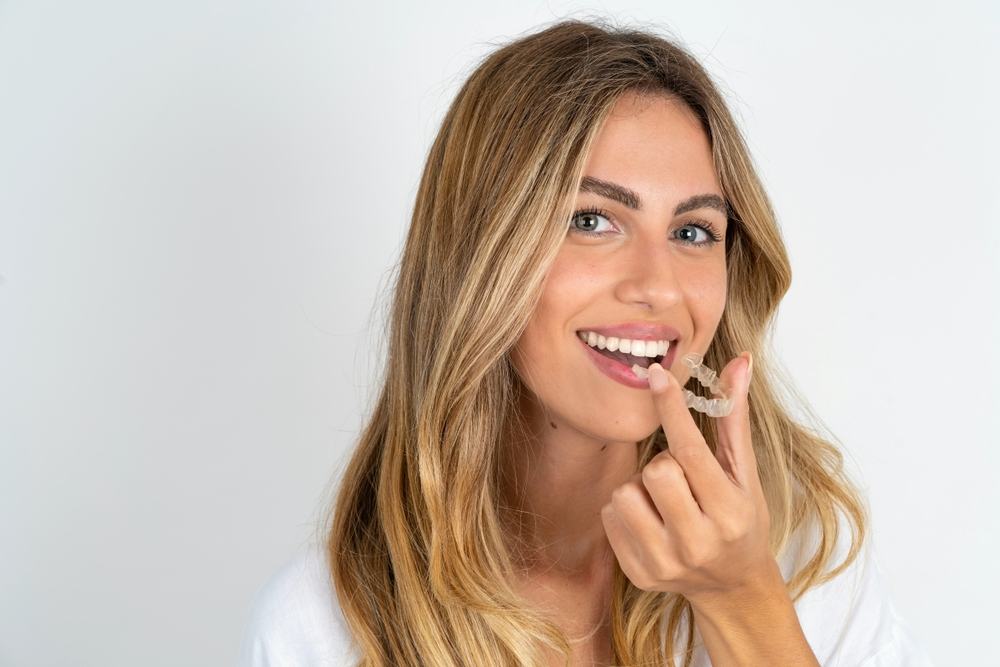Invisalign, commonly referred to as “invisible braces,” is a revolutionary teeth-straightening treatment that has transformed smiles for millions of people worldwide. Unlike traditional metal braces, Invisalign uses a series of clear, removable aligners to gradually shift teeth into alignment. Let’s explore the fascinating journey of Invisalign and discover why it’s a popular choice for achieving a confident, beautiful smile.
Table of Contents
ToggleWhat Is Invisalign?
Invisalign is the brand name for a type of clear aligner used in orthodontic treatment. These aligners are crafted from a flexible thermoplastic material called SmartTrack. The primary goal of Invisalign is to correct various dental issues, including:
Crooked Teeth: Invisalign gently nudges misaligned teeth into their proper positions over time.
Gaps: It effectively closes gaps between teeth, enhancing overall aesthetics.
Crowding: Invisalign aligners address crowded teeth by creating space and alignment.
Mild Bite Issues: If you have minor overbites, underbites, or crossbites, Invisalign can help.
How Does Invisalign Work?
The Invisalign treatment process involves three straightforward steps:
Initial Consultation and 3D Scan: You’ll meet with your dentist or orthodontist, who will use a scanner to create a detailed 3D scan of your current smile. This scan allows them to map out a customised treatment plan tailored to your specific needs. You’ll even get a sneak peek of what your new smile could look like!
Begin the Transformation: Once your custom Invisalign aligners are ready, you’ll pick them up from your provider. Your dentist will ensure that the aligners fit correctly and are comfortable. Throughout the treatment, you’ll switch to new aligners approximately every two weeks. Regular face-to-face check-ups with your provider will monitor your progress.
Post-Treatment Care: After completing your Invisalign treatment, maintaining your beautiful smile is essential. Like all teeth-straightening treatments, you’ll need to wear a retainer.
Why Choose Invisalign?
Invisalign offers several advantages over traditional braces:
Invisibility: The clear aligners are virtually unnoticeable, allowing you to smile confidently throughout your treatment.
Removability: You can remove the aligners for eating, brushing, and special occasions.
Comfort: Invisalign aligners are smooth and comfortable, without any metal wires or brackets.
Predictable Results: Advanced technology ensures precise planning and gradual teeth movement.
Should I Change My Diet When Wearing Invisalign?
Certainly Not! Unlike traditional braces, Invisalign offers more dietary freedom because you can remove the aligners while eating. However, it’s essential to make mindful food choices to maintain your dental health during treatment, for better results, and much sooner to expect! Let’s start by discussing Invisalign and its dietary considerations.
What are the recommended foods to eat while undergoing Invisalign treatment?
Soft Foods: Go for softer food options like creamy mashed potatoes, smooth yoghurts, and ripe, soft fruits (such as bananas). These foods require minimal effort to chew and reduce the risk of food particles sticking between your teeth. Remember to clean your teeth thoroughly before putting the aligners back on.
Non-Staining Drinks: While it’s best to remove your aligners when consuming any beverage other than water, choose clear or non-staining liquids. Water, milk, and clear broths are excellent companions for your Invisalign journey. They help maintain the pristine, almost invisible look of your aligners while keeping you hydrated.
Whole Grains and Soft Breads: Whole grains like rice and quinoa are wholesome and easy to rinse off after eating. Soft breads are gentle on your teeth and offer nutritional value.
Cooked Vegetables: Steamed or roasted vegetables are nutritious options that are easy to chew and less likely to get stuck between your teeth.
Lean Proteins: Select for fish, chicken, eggs, and tofu. These proteins are tooth-friendly and won’t compromise your aligners.
Foods to avoid with Invisalign aligners
Certain foods and drinks can introduce complications during Invisalign treatment. Here’s what to approach with caution or avoid:
Hard Foods: Stay away from hard and crunchy foods. Popcorn, nuts, ice, crusty bread, and hard candies can damage your aligners.
Sticky and Chewy Foods: Foods like caramel, taffy, and gum can stick to your teeth and aligners, making them difficult to remove.
Sugary Foods: Limit soda, candy, and cakes, as they are high in sugar and can lead to staining. Minimise sugary snacks to prevent cavities and maintain oral health
Acidic Foods: Acidic foods weaken teeth. Be cautious with spicy foods, especially when combined with acidic ingredients.
Dark and Coloured Foods: These can stain your aligners and affect their appearance.
Remember, maintaining good oral hygiene and making smart food choices will contribute to successful Invisalign treatment. Feel free to ask for more details or continue with additional points!
Staining Beverages: Coffee, tea, and red wine can stain both your teeth and aligners. Remove your aligners before consuming these drinks.
Remember, while Invisalign offers dietary freedom due to its removable nature, practising good oral hygiene and making smart food choices will contribute to a healthy, aligned smile. Feel free to ask if you have any more questions!
What are the effects of eating while wearing my Invisalign aligners?
Invisalign aligners are convenient and flexible, allowing you to enjoy most of your favourite foods. If you do eat food wearing Invisalign aligners, it may cause you some discomfort to chew, while also getting food stuck into your aligners. To ensure your aligners stay in good condition for the period of treatment, here is what you should remember:
Remove Before Eating: Always remove your aligners before eating. This step ensures that food particles don’t get trapped between your teeth and the aligners, reducing the risk of dental complications.
Always Clean Your Teeth: After eating, thoroughly clean your teeth before putting the aligners back on. Sticky or sugary residues can cause problems if left under the aligners.
When is the right time to visit a dentist versus a dental hygienist?
The right time to visit a dentist versus a dental hygienist depends on your oral health needs. Dentists should be visited regularly, often every 6 months, for comprehensive dental exams. They diagnose and treat various dental issues, including cavities and gingivitis. On the other hand, dental hygienists focus on preventive care and maintaining oral hygiene. Ideally, you should make an appointment with a dental hygienist twice a year and a dentist once a year. Dental hygienists perform tasks like cleaning teeth, removing plaque, and advising on proper brushing and flossing. They play a crucial role in preparing patients for dental procedures and checkups. Remember that individual risk factors and specific needs may influence the frequency of visits to each professional. So, regular dental visits are essential for overall oral health, whether you’re seeing a dentist or a dental hygienist!
Conclusion
Invisalign, a discreet alternative to traditional braces, uses clear, removable aligners to gently guide teeth into their desired positions. The journey begins with a customised treatment plan based on a 3D scan of your smile. Regular check-ups and the My Invisalign™ app monitor progress. After treatment, custom-made retainers maintain your beautiful smile. The key advantages include invisibility, comfort, removability, and predictability.
FAQs
Absolutely! You can enjoy your daily cup of coffee while wearing Invisalign aligners. However, there are a few essential points to keep in mind:
Remove Your Aligners: Before sipping your coffee, remove your aligners. Hot beverages can warp the plastic material, affecting their fit and effectiveness.
Rinse Your Mouth: After enjoying your coffee, rinse your mouth thoroughly before putting the aligners back in. This step helps prevent staining and maintains good oral hygiene.
Maintaining clean aligners is crucial for successful treatment. Here’s what you need to know:
Daily Cleaning: Clean your aligners every day. Rinse them with lukewarm water and gently brush them using a soft toothbrush. Avoid using toothpaste, as it can scratch the aligners.
Avoid Staining Foods: Remove your aligners before eating or drinking anything other than water. Staining foods (like curry or red wine) can discolour the aligners.
Regular Checkups: Visit your dentist regularly during your Invisalign journey. They’ll assess your progress and ensure everything is on track.
While you can eat most foods with Invisalign, hot foods require caution:
Remove Aligners: Take out your aligners before eating hot foods. The heat can distort the plastic.
Cool Down: Wait a few minutes after eating hot food before putting the aligners back in. Extreme temperature changes can affect their shape.
Invisalign treatment offers numerous benefits, but it does come with a cost. Here’s why:
Customisation: Each set of aligners is custom-made for your teeth, ensuring precise movement.
Advanced Technology: Invisalign uses 3D imaging technology to create personalised treatment plans.
Professional Supervision: Regular check-ins with your dentist or orthodontist are essential for successful treatment.
Materials and Research: Invisalign invests in research and development to improve their product continually.
Several factors influence the overall cost:
Complexity: The severity of your misalignment affects the number of aligners needed.
Treatment Duration: Longer treatment requires more aligners and adjustments.
Location: Costs vary based on your geographical area.
Dentist’s Expertise: Experienced providers may charge more.
Insurance Coverage: Some dental insurance plans cover part of the cost.
Remember, Invisalign is an investment in your smile and confidence. If you have any more questions or need further details, feel free to ask!

Dr David Sweeney
For over 20 years, David has been practising dentistry with positive documented results. When establishing Your Smile, he wanted an environment where patients would feel comfortable and relaxed as soon as they walked in. He treats everyone like a family member and has the ability to make everybody feel at ease.
